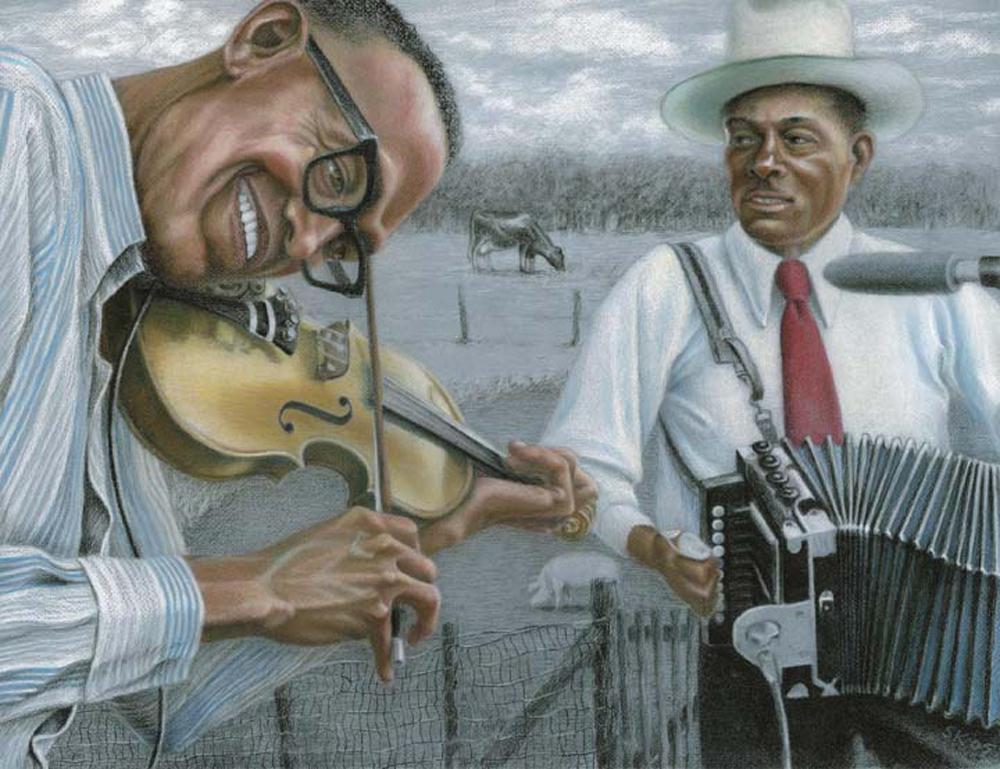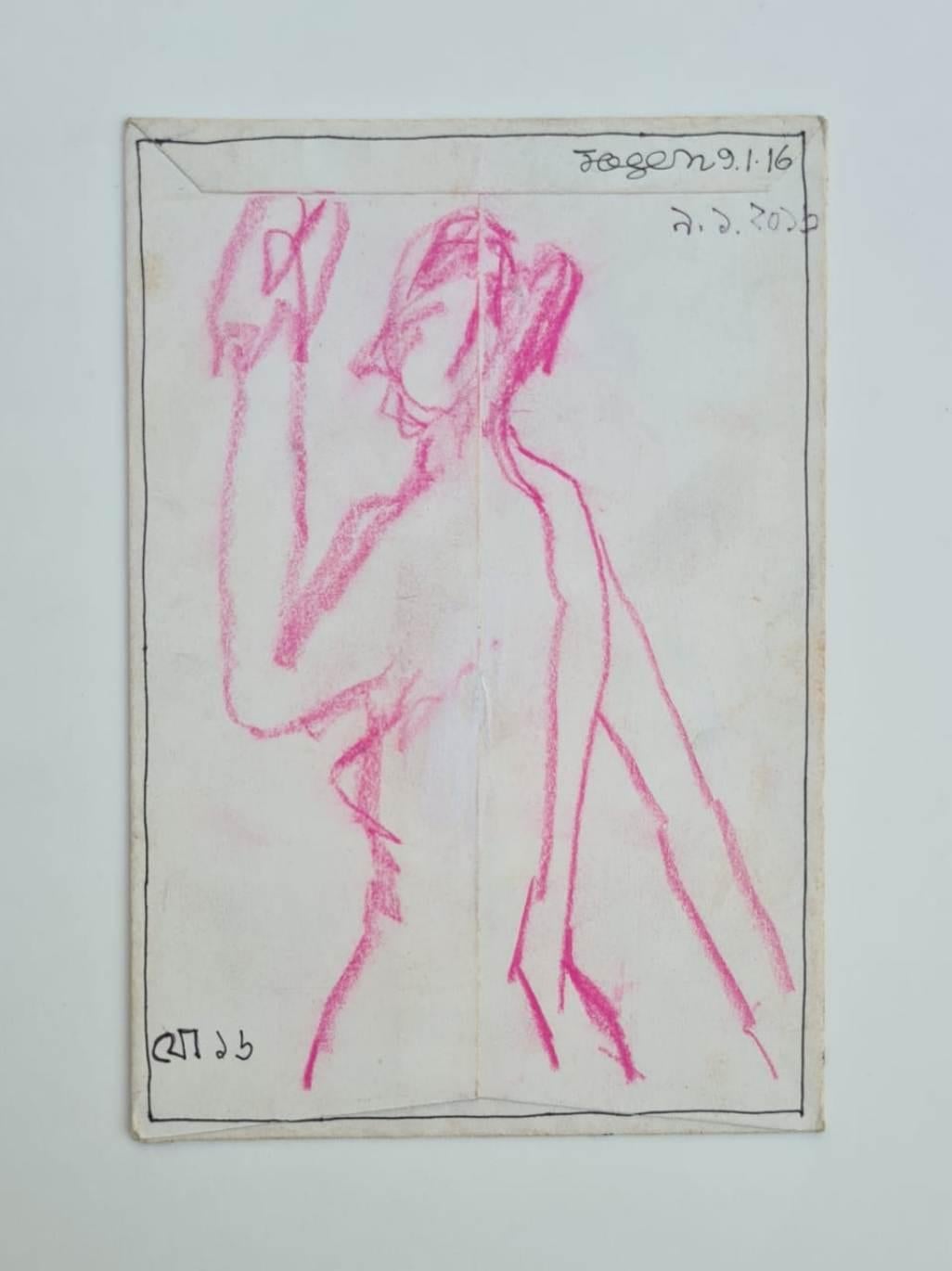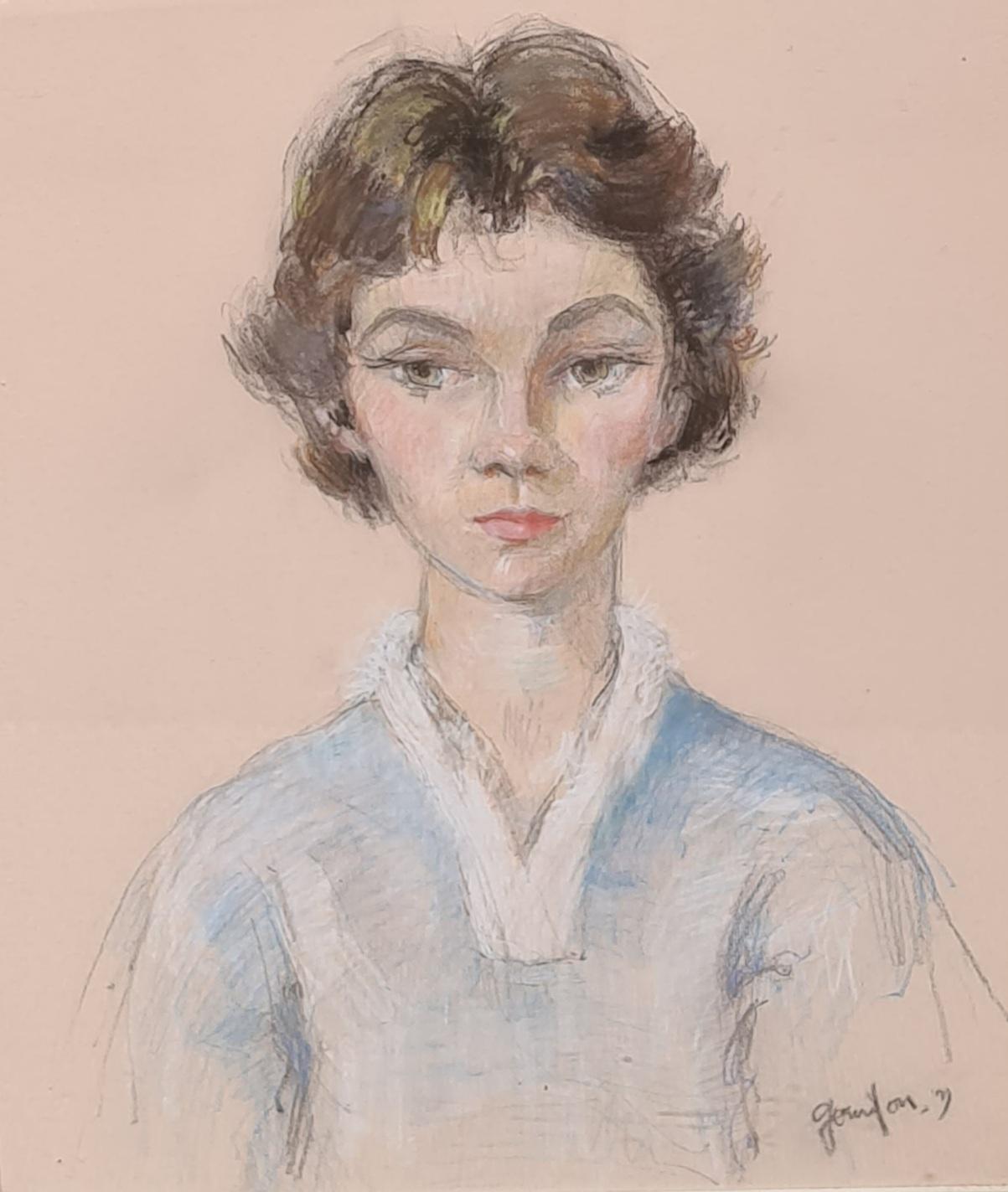Peter GardnerTranslucent Boy, 20th Century British Artist, Pastel Portrait
About the Item
- Creator:Peter Gardner (1921, British)
- Dimensions:Height: 7 in (17.78 cm)Width: 3 in (7.62 cm)
- More Editions & Sizes:1 of 1Price: $320
- Medium:
- Movement & Style:
- Period:
- Framing:Framing Options Available
- Condition:
- Gallery Location:London, GB
- Reference Number:1stDibs: LU52413344072
Peter Gardner
Peter Gardner was born in London in 1921. He studied at the Hammersmith School of Art between 1935–38, before serving in Italy and the European campaign during World War II. He returned to Hammersmith in 1947, and graduated in 1950. He then attended the London Institute of Education, where he was awarded the Art Teacher's Diploma. Gardner taught art at West Norwood School and became Head of Art at Plaistow Grammar School, as well as teaching at Fulham and South Kensington Adult Education Institute. He exhibited at the Trafford Gallery in London in 1965 and then many others, including the Royal Academy, the ROI and the New English Art Club. He retired from teaching in 1979 and moved to Dorset, where he is still painting today.
- ShippingRetrieving quote...Ships From: London, United Kingdom
- Return PolicyA return for this item may be initiated within 14 days of delivery.
- Portrait of a Lady - Late 18th Century European PastelLocated in London, GBEuropean School Late 18th Century Portrait of a Lady Pastel on paper, mounted on canvas Image size: 28 x 23 inches Contemporary style frame Provenance: Ernst Museum Auction This pastel portrait of a lady dates from the late eighteenth century. She is pictured in a white muslin dress...Category
Late 18th Century Portrait Drawings and Watercolors
MaterialsLaid Paper, Pastel
- Portrait of a Young Girl, Mid-20th Century Pastel Drawing, SignedBy Alan DurmanLocated in London, GBPastel on paper, signed bottom right Image size: 12 x 14 1/2 inches (30.5 x 36.75 cm) Contemporary style hand made frame This is a touching drawing of a young girl who is seen smili...Category
Mid-20th Century Portrait Drawings and Watercolors
MaterialsPastel, Paper
- Imperial Beauty, British School 20th Century Pastel PortraitLocated in London, GBPastel on paper on canvas, initialled lower left "ND" Image size: 13 ¾ x 22 ½ inches (35 x 57 cm) Gilt frame This fine Art Nouveau picture executed around 1900, depicts an auburn ha...Category
Early 1900s Art Nouveau Portrait Drawings and Watercolors
MaterialsPaper, Pastel
- Portrait of a Young Man Original Charcoal and Pastel French 18th CenturyLocated in London, GBFrench School 18th Century Portrait of a Young Man Charcoal and pastel on paper Image size: 11 x 7 inches Contemporary gilt frameCategory
18th Century Rococo Portrait Drawings and Watercolors
MaterialsPaper, Charcoal, Pastel
- Portrait of a Boy, Pastel Drawing, 20th Century EnglishBy William DringLocated in London, GBPastel and graphite on paper Image size: 11 x 8 1/2 inches (28 x 21.5 cm) Mounted William Dring Dring was born with the forenames Dennis William, but was known colloquially as Joh...Category
Mid-20th Century Portrait Drawings and Watercolors
MaterialsGraphite, Pastel, Paper
- Portrait of a young woman, 19th Century PastelLocated in London, GBJohn Raphael Smith 1751 - 1812 Portrait of a young lady Pastel on paper on canvas stretcher Image size: 9 x 7 inches (23 x 18 cm) FramedCategory
Early 1800s Portrait Drawings and Watercolors
MaterialsPastel
- Rare Modernist Hungarian Rabbi Pastel Drawing Gouache Painting Judaica Art DecoBy Hugó ScheiberLocated in Surfside, FLRabbi in the synagogue at prayer wearing tallit and tefillin. Hugó Scheiber (born 29 September 1873 in Budapest – died there 7 March 1950) was a Hungarian modernist painter. Hugo Scheiber was brought from Budapest to Vienna at the age of eight where his father worked as a sign painter for the Prater Theater. At fifteen, he returned with his family to Budapest and began working during the day to help support them and attending painting classes at the School of Design in the evening, where Henrik Papp was one of his teachers. He completed his studies in 1900. His work was at first in a post-Impressionistic style but from 1910 onward showed his increasing interest in German Expressionism and Futurism. This made it of little interest to the conservative Hungarian art establishment. However, in 1915 he met the great Italian avant-gardist Filippo Tommaso Marinetti and the two painters became close friends. Marinetti invited him to join the Futurist Movement. The uniquely modernist style that he developed was, however, closer to German Expressionism than to Futurism and eventually drifted toward an international art deco manner similar to Erté's. In 1919, he and his friend Béla Kádar held an exhibition at the Hevesy Salon in Vienna. It was a great success and at last caused the Budapest Art Museum to acquire some of Scheiber's drawings. Encouraged, Scheiber came back to live in Vienna in 1920. A turning point in Scheiber's career came a year later, when Herwarth Walden, founder of Germany's leading avant-garde periodical, Der Sturm, and of the Sturm Gallery in Berlin, became interested in Scheiber's work. Scheiber moved to Berlin in 1922, and his paintings soon appeared regularly in Walden's magazine and elsewhere. Exhibitions of his work followed in London, Rome, La Paz, and New York. Scheiber's move to Germany coincided with a significant exodus of Hungarian artists to Berlin, including Laszlo Moholy-Nagy and Sandor Bortnyik. There had been a major split in ideology among the Hungarian avant-garde. The Constructivist and leader of the Hungarian avantgarde, Lajos Kassák (painted by Hugó Scheiber in 1930) believed that art should relate to all the needs of contemporary humankind. Thus he refused to compromise the purity of his style to reflect the demands of either the ruling class or socialists and communists. The other camp believed that an artist should be a figurehead for social and political change. The fall out and factions that resulted from this politicisation resulted in most of the Hungarian avant gardists leaving Vienna for Berlin. Hungarian émigrés made up one of the largest minority groups in the German capital and the influx of their painters had a significant effect on Hungarian and international art. Another turning point of Scheiber's career came in 1926, with the New York exhibition of the Société Anonyme, organized by Katherine Dreier. Scheiber and other important avant garde artists from more than twenty-three countries were represented. In 1933, Scheiber was invited by Marinetti to participate in the great meeting of the Futurists held in Rome in late April 1933, Mostra Nazionale d’Arte Futurista where he was received with great enthusiasm. Gradually, the Hungarian artists began to return home, particularly with the rise of Nazism in Germany. Kádar went back from Berlin in about 1932 and Scheiber followed in 1934. He was then at the peak of his powers and had a special flair in depicting café and cabaret life in vivid colors, sturdily abstracted forms and spontaneous brush strokes. Scheiber depicted cosmopolitan modern life using stylized shapes and expressive colors. His preferred subjects were cabaret and street scenes, jazz musicians, flappers, and a series of self-portraits (usually with a cigar). his principal media being gouache and oil. He was a member of the prestigious New Society of Artists (KUT—Képzőművészek Új Társasága)and seems to have weathered Hungary's post–World War II transition to state-communism without difficulty. He continued to be well regarded, eventually even receiving the posthumous honor of having one of his images used for a Russian Soviet postage stamp (see image above). Hugó Scheiber died in Budapest in 1950. Paintings by Hugó Scheiber form part of permanent museum collections in Budapest (Hungarian National Museum), Pecs (Jannus Pannonius Museum), Vienna, New York, Bern and elsewhere. His work has also been shown in many important exhibitions, including: "The Nell Walden Collection," Kunsthaus Zürich (1945) "Collection of the Société Anonyme," Yale University Art Gallery, New Haven, Connecticut (1950) "Hugó Scheiber: A Commemorative Exhibition," Hungarian National Museum, Budapest (1964) "Ungarische Avantgarde," Galleria del Levante, Munich (1971) "Paris-Berlin 1900-1930," Centre Georges Pompidou, Paris (1978) "L’Art en Hongrie, 1905-1920," Musée d’Art et l’Industrie, Saint-Etienne (1980) "Ungarische Avantgarde in der Weimarer Republik," Marburg (1986) "Modernizmus," Eresz & Maklary Gallery, Budapest (2006) "Hugó Scheiber & Béla Kádár," Galerie le Minotaure, Paris and Tel Aviv (2007) Hugó Scheiber's paintings continue to be regularly sold at Sotheby's, Christie's, Gillen's Arts (London), Papillon Gallery (Los Angeles) and other auction houses. He was included in the exhibition The Art Of Modern Hungary 1931 and other exhibitions along with Vilmos Novak Aba, Count Julius Batthyany, Pal Bor, Bela Buky, Denes Csanky, Istvan Csok, Bela Czobel, Peter Di Gabor, Bela Ivanyi Grunwald, Baron Ferenc Hatvany, Lipot Herman, Odon Marffy, C. Pal Molnar...Category
Early 20th Century Modern Figurative Paintings
MaterialsPaper, Charcoal, Pastel, Watercolor, Gouache
- The Nude - Drawing by Alberto Ziveri - 1938By Alberto ZiveriLocated in Roma, ITThe Nude is a drawing realized by Alberto Ziveri in 1938. Hand-signed. In good conditions. The artwork is represented through deft strokes masterly. Alberto Ziveri (Rome,1908 – 1...Category
1930s Modern Figurative Drawings and Watercolors
MaterialsPaper, Pastel
- Winter Landscape - Drawing by Alberto Ziveri - 1947By Alberto ZiveriLocated in Roma, ITWinter Landscape is a drawing realized by Alberto Ziveri in 1947. Pastel on paper. Hand-signed. In good conditions.Category
20th Century Modern Figurative Drawings and Watercolors
MaterialsPaper, Pencil, Pastel
- Canray and BoisSec (figurative drawing, Creole musicians, rural, fiddle player)By Susan KieferLocated in Kansas City, MOSusan Kiefer Canray and BoisSec Pastel on paper Year: 2004 Size: 19x25in COA provided Ref.: 924802-1664 Framed pastel portrait of beloved Creole musicians Canray Fontenot and BoisSe...Category
Early 2000s Modern Portrait Drawings and Watercolors
MaterialsPaper, Pastel
- Untitled, Figurative, Pastel on Paper by Modern Artist "In Stock"By Jogen ChowdhuryLocated in Kolkata, West BengalJogen Chowdhury : Untitled Pastel on Envelop ; 7 x 5 inches ; 2016 Signed by the Artist. Style : He has immense contribution in inspiring young artists of India. Jogen Chowdhury ha...Category
2010s Modern Figurative Drawings and Watercolors
MaterialsPastel, Paper
- Suzanne, Large Mid Century Portrait Drawing by GourdonLocated in Cotignac, FRFrench, Mid Century, pastel and crayon portrait of an elegant young lady by Gourdon. Signed and dated bottom left. Trade label to the back board. Presented in period deep 'tray' frame. This seems to be an early work by the artist and hence it carries his name rather than his later more distinctive signature 'Aslan'. Alain Gordon was one of two brothers, his sibling Michel also went on to achieve notable success with his distinctive 'comic' style. Alain Gourdon...Category
Mid-20th Century Modern Portrait Drawings and Watercolors
MaterialsPencil, Paper, Crayon, Pastel, Watercolor






